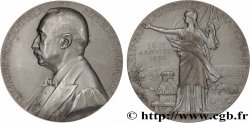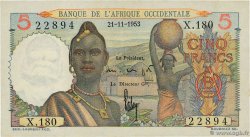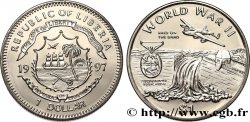fme_398876 - III REPUBLIC Médaille des colonies françaises
недоступный.
Товар уже продан в нашем интернет-магазине (2016)
Цена: : 220.00 €
Товар уже продан в нашем интернет-магазине (2016)
Цена: : 220.00 €
Тип Médaille des colonies françaises
Дата: 1935
Монетный двор / Город: Guyane
Металл: bronze
Диаметр: 63 mm
Ориентация осей монеты: 12 h.
Гравер MONIER Émile Adolphe (1883-1970)
Вес: 127 g.
Век: lisse + corne BRONZE
Комментарии о состоянии
Belle médaille avec des reliefs bien nets et une agréable patine
Лицевая сторона
Аверс: легенда: FÊTES DU TRICENTENAIRE / 1635-1935.
Аверс: описание: Buste de femme guyanaise à gauche.
Обратная сторона
Реверс: легенда: LA GUYANE PROVINCE FRANÇAISE / FERT AURUM INDUSTRIA.
Реверс: Описание: Armes de la Guyane surmontée de la banderole avec sa devise.
Комментарий
La côte de Guyane fut reconnue par Christophe Colomb en 1498. Malgré le partage du Nouveau Monde organisé en 1494 par le traité de Tordesillas entre le Portugal et l'Espagne, les nations européennes sont à l’origine de nombreuses tentatives de colonisation en Guyane dès le XVIe siècle.
Dès 1503 commencent les premières implantations françaises dans la zone de Cayenne. Notons notamment celle des Français avec le voyage de Nicolas Guimestre en 1539, suivie par celle de l’Anglais Robert Baker (1562) et celle de Gaspard de Sotelle (1568-1573) qui implante plus de 120 familles espagnoles dans l’île de Cayenne.
De 1596 à 1598, les Anglais John Ley et Lawrence Keymis, et le Néerlandais Abraham Cabeliau, effectuent des reconnaissances géographiques précises des côtes de la Guyane. Les vraies implantations européennes apparaissent surtout au XVIIe siècle, par des occupations ponctuelles (quelques années) d’embouchures fluviales, et sont l’œuvre de la France, de l’Angleterre et des Pays-Bas.
En 1604, la colonie de Guyane prend le nom de France équinoxiale.
.
Dès 1503 commencent les premières implantations françaises dans la zone de Cayenne. Notons notamment celle des Français avec le voyage de Nicolas Guimestre en 1539, suivie par celle de l’Anglais Robert Baker (1562) et celle de Gaspard de Sotelle (1568-1573) qui implante plus de 120 familles espagnoles dans l’île de Cayenne.
De 1596 à 1598, les Anglais John Ley et Lawrence Keymis, et le Néerlandais Abraham Cabeliau, effectuent des reconnaissances géographiques précises des côtes de la Guyane. Les vraies implantations européennes apparaissent surtout au XVIIe siècle, par des occupations ponctuelles (quelques années) d’embouchures fluviales, et sont l’œuvre de la France, de l’Angleterre et des Pays-Bas.
En 1604, la colonie de Guyane prend le nom de France équinoxiale.
.








 Cообщить об ошибке
Cообщить об ошибке Распечатать страницу
Распечатать страницу Отправить мой выбор
Отправить мой выбор Задать вопрос
Задать вопрос Consign / sell
Consign / sell
 Информация
Информация















